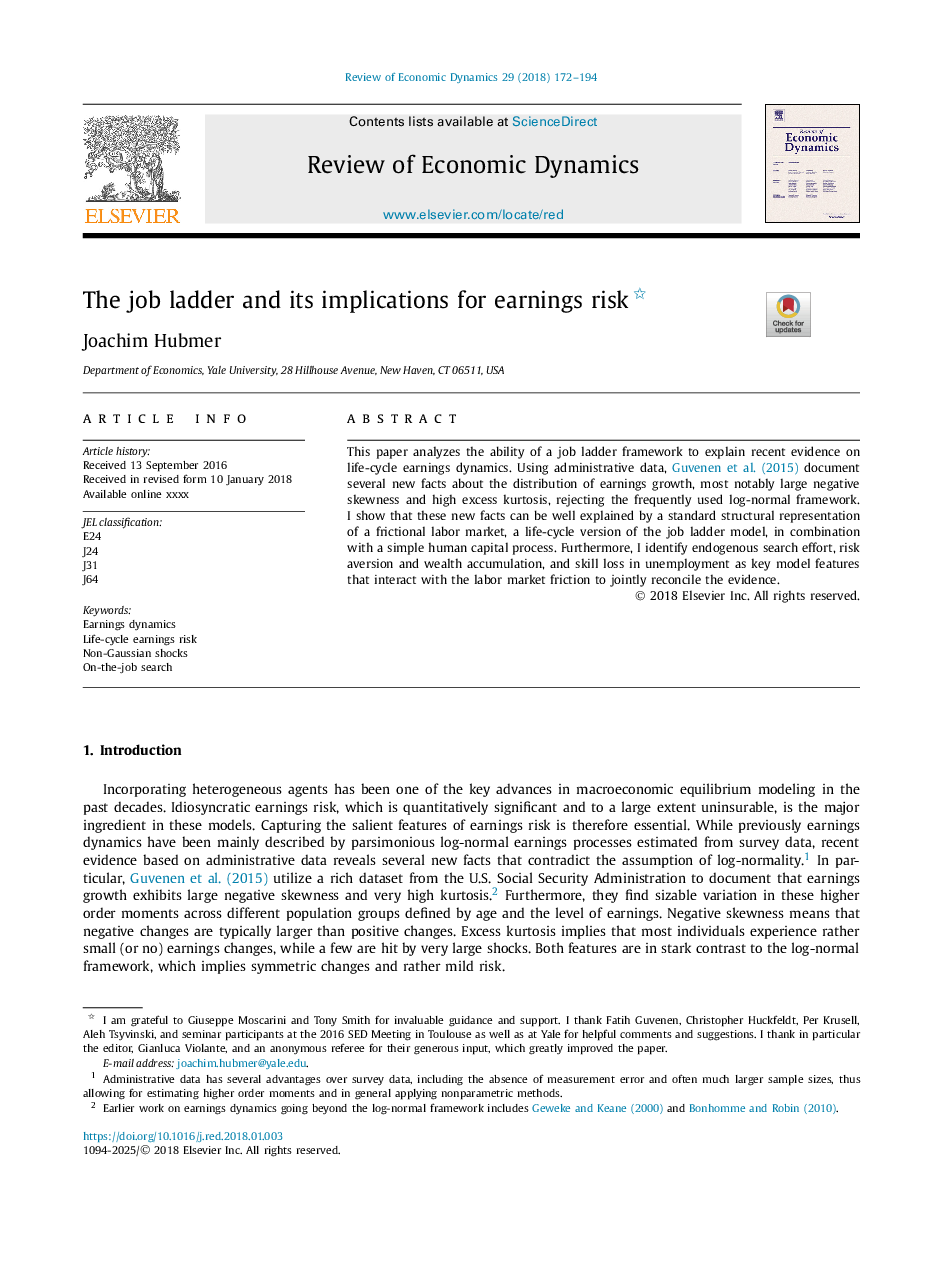| Article ID | Journal | Published Year | Pages | File Type |
|---|---|---|---|---|
| 7388158 | Review of Economic Dynamics | 2018 | 23 Pages |
Abstract
This paper analyzes the ability of a job ladder framework to explain recent evidence on life-cycle earnings dynamics. Using administrative data, Guvenen et al. (2015) document several new facts about the distribution of earnings growth, most notably large negative skewness and high excess kurtosis, rejecting the frequently used log-normal framework. I show that these new facts can be well explained by a standard structural representation of a frictional labor market, a life-cycle version of the job ladder model, in combination with a simple human capital process. Furthermore, I identify endogenous search effort, risk aversion and wealth accumulation, and skill loss in unemployment as key model features that interact with the labor market friction to jointly reconcile the evidence.
Related Topics
Social Sciences and Humanities
Economics, Econometrics and Finance
Economics and Econometrics
Authors
Joachim Hubmer,
